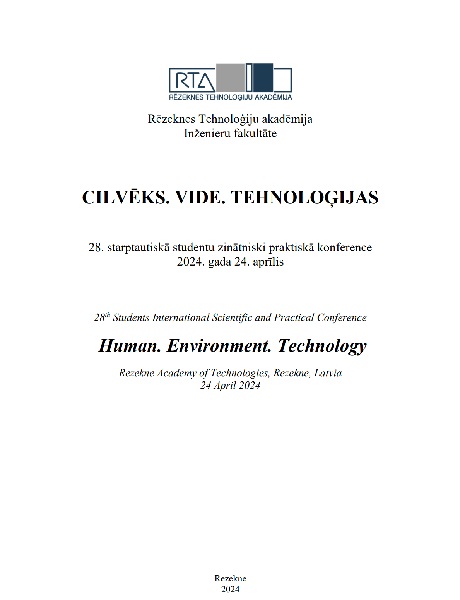PHENOLIC CONTENT OF PEPPERMINT MENTHA PIPERITA AND LEMON BALM MELISSA OFFICINALIS WHEN GROWN IN AN URBAN GARDEN
DOI:
https://doi.org/10.17770/het2024.28.8266Keywords:
urban garden, phenols, peppermint, lemon balmAbstract
Within the framework of the LBTU Malnava College project "The influence of growing conditions on ornamental plants", a study was conducted, the aim of which was to evaluate the influence of the sky on the growth of ornamental plants and herbs and the phenolic content of mint and lemon balm leaves when grown in an urban garden. According to the obtained results, it was concluded that the differences in phenol content are more significant only for mint and this difference can be influenced not only by the fact that the plants were grown in an urban environment, but also .by many other factors such as climate, fertilization, soil composition, precipitation, etc.
Downloads
References
Augšpole I., Dūma M., Ozola B. (2018). Bioactive compounds in herbal infusions. Agronomy Research, Vol. 16(SI2), p. 1322–1330
Büyükbalci A., Nefir S. (2008). Determination of In Vitro Antidiabetic Effects, Antioxidant
Activities and Phenol Contents of Some Herbal Teas. Plant Foods Hum Nutr 63:27–33
Kaškoniene V., Maruška A., Kornyšova O., Charczun N., Ligor M., Buszewski B. (2009). Quantitative and qualitative determination of phenolic compounds in honey. Chemine Technologija, Vol. 3(52), p. 74–80.
Klavins L., Kviesis J., Klavins M. (2017). Comparison of methods of extraction of phenolic compounds from American cranberry (Vaccinium macrocarpon L.) press residues. Agronomy Research, Vol. 15(S2), p. 1316–1329.
Moraes-de-Souza R.A., Oldoni, T. L. C., Regitano-d'Arce, M. A. B, Alencar, S. M.(2007). Antioxidant activity and phenolic composition of herbal infusions consumed in Brazil. Cienc. Tecnol. Aliment. 6(1) 41-47
Wabaidur S.A., Obbed M.S., Alothman Z.A., Alfaris N.A., Badjah-Hadj-Ahmed A.Y., Siddiqui M.R., Altamimi J.Z., Aldayel T.S. (2020). Total phenolic acids and flavonoid contents determination in Yemeni honey of various floral sources: Folin–Ciocalteu and spectrophotometric approach, Food Science and Technology (Campinas), Vol. 40(24), [Tiešsaiste] [skatīts: 2024. g. 5. apr.]. Pieejams: https://doi.org/10.1590/fst.33119.
Olszowy M. (2019). What is responsible for antioxidant properties of polyphenolic compounds from plants? Plant Physiology and Biochemistry, Vol. 144, p. 135–134.


